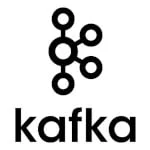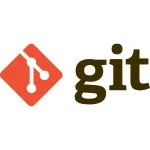Introduction to Kanban
Kanban is a popular project management methodology that focuses on visualizing work, limiting work in progress (WIP), and improving workflow efficiency. It originated from the Toyota Production System and was later adapted for software development and other knowledge work environments.
The word “Kanban” translates to “signboard” or “visual card” in Japanese. At its core, Kanban provides a visual representation of work items and their progress through a series of stages or columns, often represented on a physical or digital board. It allows teams to have a clear overview of their work, identify bottlenecks, and optimize their workflow.
Key Principles and Components of Kanban:
- Visual Board: A Kanban board is the central component of the methodology. It consists of columns representing different stages of the workflow, typically starting with “To Do,” “In Progress,” and “Done.” Each work item, often represented as a card or sticky note, is placed in the appropriate column based on its current status.
- Work in Progress (WIP) Limits: Kanban emphasizes limiting the number of work items in progress at any given time. This helps prevent overloading individuals or teams and ensures that work is completed before new items are started. WIP limits are set for each column to regulate the flow of work through the system.
- Visual Signals (Kanban Cards): Work items in Kanban are represented by visual signals, such as cards or sticky notes. These cards contain relevant information about the task, including its description, priority, assignee, and due date. The cards move across the columns as the work progresses.
- Continuous Flow: Kanban promotes a continuous flow of work items through the system, aiming to reduce bottlenecks and optimize efficiency. Work items are pulled from one column to the next only when there is capacity and the WIP limit allows for it.
- Explicit Policies: Kanban encourages teams to define explicit policies for each column, outlining the criteria for moving items between stages. These policies bring clarity and consistency to the workflow, enabling everyone to understand how work should progress.
- Measure and Improve: Kanban encourages continuous improvement through measurement and analysis. Teams track cycle times, lead times, and other performance metrics to identify areas for improvement and make data-driven decisions.
Benefits of Kanban include increased transparency, improved collaboration, reduced waste, and enhanced workflow efficiency. It enables teams to visualize their work, identify and resolve bottlenecks, and optimize their processes incrementally.
Kanban is a flexible methodology that can be applied to various contexts beyond software development, including project management, product development, and personal productivity. Its simplicity and adaptability make it a popular choice for teams seeking a visual and collaborative approach to managing their work.
How to Implement Kanban
Implementing Kanban involves several steps to set up and establish the methodology within your team or organization. Here is a general outline of how to implement Kanban:
- Understand the Current Process: Begin by thoroughly understanding your existing workflow and processes. Identify the different stages or steps involved in completing work items and the current pain points or areas for improvement.
- Define Columns and Workflow: Design the Kanban board by determining the columns that represent the stages of your workflow. Common columns include “To Do,” “In Progress,” and “Done.” Customize the column names to match your specific process. Consider the dependencies and handoffs between different stages.
- Set WIP Limits: Determine the appropriate Work in Progress (WIP) limits for each column. WIP limits prevent overloading individuals or teams and maintain a balanced flow of work. Start by observing the current workload and gradually adjust the limits based on team capacity and efficiency.
- Visualize the Kanban Board: Create a physical or digital Kanban board that visually represents your workflow. If using a physical board, use sticky notes or cards for work items. For digital implementation, there are numerous Kanban software tools available. Ensure that the board is easily accessible and visible to all team members.
- Populate the Initial Board: Transfer your existing work items onto the Kanban board, placing them in the appropriate columns based on their current status. This step helps transition from the previous workflow to the Kanban system.
- Establish Policies: Define explicit policies for each column to clarify the criteria for moving work items between stages. Policies could include rules for starting and completing work, quality assurance, and communication practices. Document these policies and make them easily accessible to the team.
- Communicate and Train: Introduce Kanban to the team and explain the benefits and objectives of using the methodology. Provide training and guidance on how to work with the Kanban board, understand the WIP limits, and follow the established policies. Encourage open communication and address any concerns or questions.
- Continuous Improvement: Regularly review and analyze the Kanban board and its performance metrics. Track cycle times, lead times, and other relevant metrics to identify bottlenecks, inefficiencies, or opportunities for improvement. Collaborate as a team to make adjustments to the workflow, WIP limits, or policies to enhance efficiency and productivity.
- Adapt and Evolve: Kanban is an iterative process, so be open to feedback and adapt the methodology as needed. As the team gains experience and understands the workflow better, make adjustments to the board, policies, or WIP limits to continually improve and meet changing needs.
Remember that the implementation of Kanban should be tailored to your specific context and requirements. It is essential to involve the team in the process and continuously collaborate to refine and optimize the workflow based on real-time feedback and data analysis.
Benefits and Drawbacks of Kanban
Kanban offers several benefits and advantages, as well as a few potential drawbacks. Let’s explore them:
Benefits of Kanban:
- Improved Workflow Efficiency: Kanban enables teams to visualize their workflow, identify bottlenecks, and optimize their processes. By limiting work in progress (WIP) and focusing on continuous flow, Kanban helps improve efficiency and throughput.
- Increased Transparency: Kanban provides transparency into the status of work items. Team members can easily see the progress of tasks and understand the overall workload. This transparency promotes collaboration and fosters a shared understanding of the work.
- Better Work Prioritization: Kanban allows teams to prioritize work based on the board’s visual representation. It helps identify high-priority items and ensures that the team focuses on the most important tasks. This leads to better alignment with business objectives.
- Flexibility and Adaptability: Kanban is known for its flexibility and adaptability to different types of work and workflows. It can be applied to various contexts, from software development to project management, allowing teams to customize the process to fit their specific needs.
- Reduced Waste: Kanban emphasizes reducing waste in the workflow. By optimizing the flow of work, teams can minimize idle time, reduce context switching, and eliminate unnecessary activities. This leads to increased productivity and improved resource utilization.
Drawbacks of Kanban:
- Lack of Structured Planning: Kanban focuses on the current workflow and doesn’t provide a structured planning phase. This can be a drawback if your project requires detailed upfront planning or if you have strict deadlines and dependencies.
- Dependency on Team Discipline: Kanban relies heavily on the discipline and self-organization of the team. If team members don’t adhere to WIP limits, regularly update the board, or follow the established policies, the benefits of Kanban may not be fully realized.
- Limited Predictability: Kanban’s focus on continuous flow and flexibility may result in reduced predictability compared to more structured methodologies like Scrum. While this can be advantageous for certain projects, it may pose challenges when it comes to setting and meeting fixed deadlines.
- Less Formalized Roles and Responsibilities: Kanban tends to have less formalized roles and responsibilities compared to methodologies like Scrum, which have defined roles such as Scrum Master and Product Owner. This can sometimes lead to ambiguity in decision-making and accountability.
- Potential Over-Reliance on Visuals: Kanban heavily relies on visual representations, such as the Kanban board. While this is beneficial for many teams, it may be challenging for remote teams or those with members who are visually impaired. Digital tools can help mitigate this drawback.
It’s important to consider these benefits and drawbacks in the context of your specific project or team. Kanban is well-suited for teams seeking increased efficiency, transparency, and flexibility. However, if structured planning, strict deadlines, or highly predictable outcomes are critical to your project, other methodologies may be more suitable.
Types of Kanban
There are different types or variations of Kanban that have evolved over time to address specific needs and contexts. Here are some common types of Kanban:
- Basic Kanban: Basic Kanban is the foundational form of Kanban, consisting of a visual board divided into columns representing different stages of work. Work items are represented as cards or sticky notes and moved across the columns as they progress. Basic Kanban focuses on visualizing work and limiting work in progress (WIP).
- Personal Kanban: Personal Kanban is an adaptation of Kanban for individual productivity and task management. It helps individuals visualize and prioritize their work, manage their workflow, and maintain a balanced workload. Personal Kanban boards typically have columns like “To Do,” “Doing,” and “Done.”
- Team Kanban: Team Kanban is used by collaborative teams to manage their collective workflow. It involves visualizing work on a shared board and coordinating tasks among team members. Team Kanban emphasizes collaboration, transparency, and efficient flow of work across the team.
- Scrumban: Scrumban combines elements of Scrum and Kanban methodologies. It integrates the iterative and time-boxed approach of Scrum with the flow-based principles of Kanban. Scrumban is useful when transitioning from Scrum to Kanban or when a team wants to blend the two approaches.
- Kanban for DevOps: Kanban for DevOps applies Kanban principles to the software development and operations processes. It helps manage the flow of work across development, testing, deployment, and operations stages. Kanban for DevOps promotes collaboration, continuous delivery, and efficiency in the software development lifecycle.
- Portfolio Kanban: Portfolio Kanban is used to manage and prioritize work at the portfolio or organizational level. It provides visibility into multiple projects or initiatives, allowing stakeholders to make informed decisions about resource allocation and prioritization.
- Service Kanban: Service Kanban is employed in service-oriented environments such as IT service management, customer support, or help desk operations. It helps track and manage service requests, incidents, or tickets, ensuring timely resolution and efficient service delivery.
It’s worth noting that these types of Kanban are not mutually exclusive, and teams often tailor the Kanban methodology to their specific needs by combining elements from different variations. The choice of Kanban type depends on the nature of work, team structure, and organizational context.
Conclusion
Kanban is a powerful project management methodology that offers numerous benefits for teams and organizations. By visualizing work, limiting work in progress, and optimizing workflow efficiency, Kanban promotes transparency, collaboration, and continuous improvement. It provides flexibility to adapt to different work contexts and allows teams to prioritize tasks effectively.
The benefits of Kanban include improved workflow efficiency, increased transparency, better work prioritization, flexibility, and reduced waste. Kanban enables teams to optimize their processes, identify bottlenecks, and make data-driven decisions. It encourages a continuous flow of work and empowers teams to adapt and evolve their processes over time.
However, it’s important to consider potential drawbacks of Kanban, such as the lack of structured planning, dependency on team discipline, limited predictability, less formalized roles and responsibilities, and potential over-reliance on visuals. These drawbacks should be assessed in relation to your project’s specific needs and requirements.





Kanban is a popular framework used to implement agile and DevOps software development.
Your article is awesome. It is exactly what I was looking for. I also want to recommend to everyone